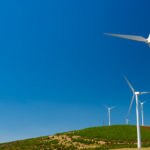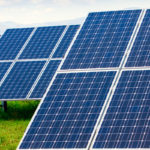Renewable energies gaining ground… except in Spain
The planet’s survival is an issue over which, by definition, all interests converge. Finally, after wasting precious decades and, with some exceptions, renewable energies seem to be managing to get politicians, businesses and citizens to unite and fight for a common cause.

According to numerous recent reports and articles, CO2 emission control initiatives are finally yielding results and helping keep levels stable despite economic growth and dwindling oil prices.
This key drivers behind this trend are the investments that are being pledged by countries such as China ($83 billion invested in 2014, compared to $62.6 billion the previous year) and the United States (38.3 billion in 2014 vs. $36 billion in 2013).
Also the BRICS (an acronym that stands for Brazil, Russia, India, China and South Africa), are playing a key role in the development of renewables. This group of countries is investing in the development of wind farms, solar parks and biofuel plants production capacity of over 1 million liters, according to the Renewable Energy Report 2016 published by REN21, the most quoted source in the field of renewable energies.
In 2014, renewable energies accounted for 58.5% of growth in the world’s installed power capacity. Wind, solar and hydraulic energy have led a market that already accounts for 27.7% of the world’s energy generation, according to the aforementioned report. On the other hand, segments that still require more efforts, due to their environmental impact are climate control and transport.
Overlapping criteria
The renewable energy sector is in the midst of a vibrant stage that condensates all the ingredients of a race that, with exceptions such as Spain in 2015, is growing and gaining traction in all its modalities. But maybe more than about a race, we should be talking about an Olympiad, based on the broad range of fields involved and its universal nature.
But many economic, geographic, political, environmental, business and, also, ideological interests overlap. Thus, things about which ecologists may get more excited, discourage investors; what in Spain is banned is subsidized in the US, and yesterday’s utopia is today’s priority.

Spain’s collapse
"There was less wind and less rainfall than in 2014, but, last year, renewable energy sources – wind, water, sun, biomass – were one of the main sources of electricity in Spain. Up to 36.9% of the total amount of kilowatts used in the country came from clean energy sources. Lagging far behind in second place, nuclear energy generated (besides certain waste that will take thousands of years to decay), 21.8% of the electricity”, according to the Spanish Electricity System 2015 Report.
This quote makes reference to the same year 2015 that is widely regarded, by almost all analysts, as the worst for the development of renewable energies in Spain. It may be a matter of points of view, but hardly any sources endorsed the latest Renewable Energy Law passed in June 2015.
The fact is that the drop in renewable energy consumption in 2015 was a result of combination of factors, including four years of investor hiatus, the entry into force of the Renewable Energy Law, and cutbacks affecting the solar industry.
The anonymousness with which the business leaders of the industry rejected the latest batch of measures and the resulting dramatic drop in investments, paints a grim landscape in Spain which, in the meantime, will be facing over 20 arbitration processes in the International Centre for Settlement of Investment Disputes (ICSID), the Stockholm Chamber of Commerce and Uncitral.
According to by Greenpeace, the breach of emission reduction targets will cost Spain an estimated €100 million in fines, besides several hundred million more in purchases of carbon emission rights.
China and the United States, leading the way
The collapse of investments in Spain justifies a pessimism that is in stark contrast with other countries' booming activity.
In regions such as the United States, China or Latin America, investments and subsidies, technologies and collective awareness are beginning to generate a feeling among society that conventional sources of energy, such as fossil and oil, can be replaced before they are exhausted.
Indeed, the status of renewable energies shifts radically depending on the region, country, point in time or information source we look at. Technological development, political context and business needs and opportunities are prone to constant and sharp fluctuations, and as interests differ and are, often, opposed, situation assessments can change dramatically depending on their focus.
Almost 148 new gigawatts from clean sources, the equivalent of Africa’s entire generating capacity, were commissioned. In economic terms, investments stood at $286 billion (a bit over €250 billion), with China and the United States as the main drivers of the world’s renewable market, according also to REN21.
According to this report, activity in the United States has also had its share of ups and downs, with wind power investments dropping sharply in 2014 due to climate instability. In the US, were each state is allowed to pass their own laws, this flexibility allows adapting laws to each region’s reality.
In short, it can be said that there is a consensus regarding the need to progressively stop using finite and polluting sources and turn to clean sources. It is also evident that increasingly cheaper technologies will bolster their development and encourage investment. But the unstoppable growth of power consumption at a global scale, demands not overlooking this transition toward cleans energies.